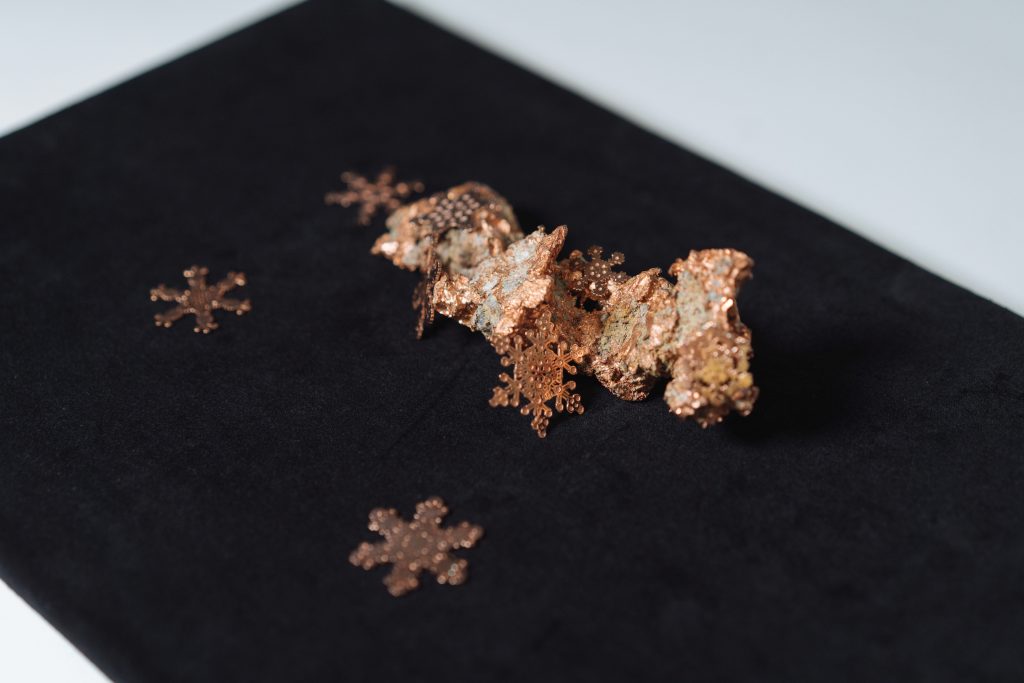Clouds have their own microbiomes, made up of bacteria, viruses and fungal spores, which have been swept up from the ground by wind and through evaporation, in order to hitch rides around the planet. Water vapour can collect on these tiny specks of organic matter and seed ice crystals which fall as snow, their intricate crystalline forms being sculpted through the effects of microgravity as they plummet back to Earth.
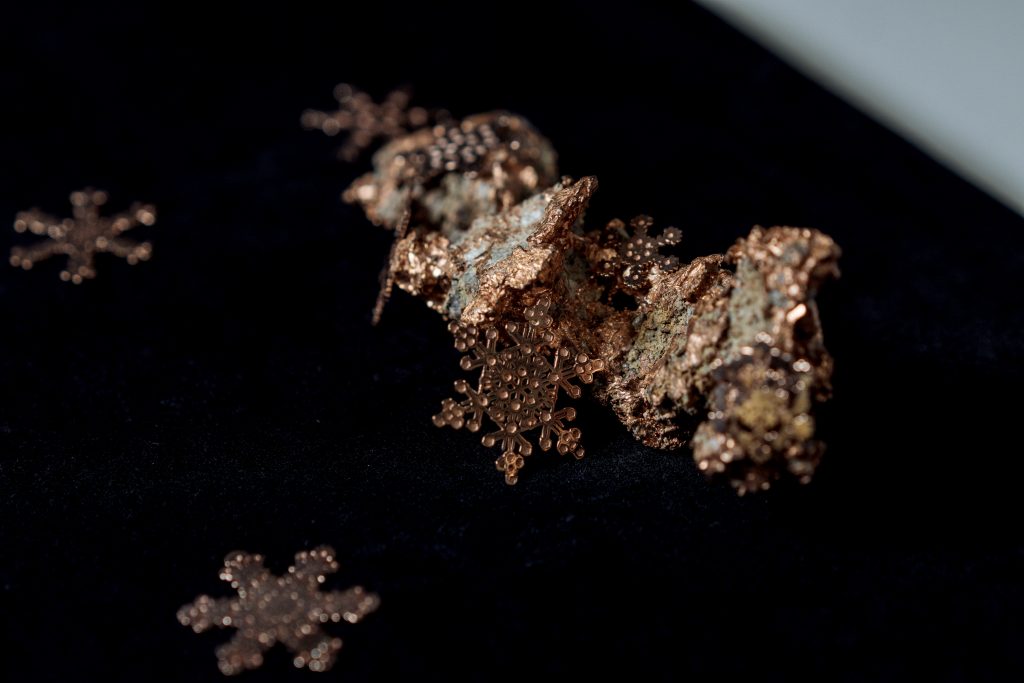
Each of the snowflakes in this series has been algorithmically generated from scientific data in the form of the code numbers allotted to samples or fragments of pathogenic micro-organisms which can be acquired by laboratories for use in research. The snowflakes have been 3D printed in copper which is known for its antimicrobial properties and have been impregnated with the DNA or RNA of the microbes from which they were generated. The invisible biological material on the 3D printed snowflakes is sterile, and there is no clear evidence that microbes falling as snow can cause disease. The snowflakes are exhibited with a fragment of unprocessed copper ore which connects to notions of ‘bioprospecting’ – the idea of ‘mining’ extreme environments, such as the stratosphere for bacteria with novel properties.
The work has been made in collaboration with Dr Sarah Alexander and colleagues at the National Collection of Type Cultures, and with Dr Ines Moura and Dr Jane Freeman at the University of Leeds.
“The Birth of Snowflakes” was commissioned by BOM (Birmingham Open Media).
Exhibitions
“Atmospheric Encounters“, BOM, Birmingham, UK, 19th May – 28th August 2021.
“Atmospheric Encounters“, SOLU Space of the Bioart Society in Helsinki, Finland, 7th October – 20th November 2021
“Collateral Effects” a solo exhibition of works by Anna Dumitriu at the North Wall, Oxford, UK, 5th to 29th October 2022.
The Snowflakes
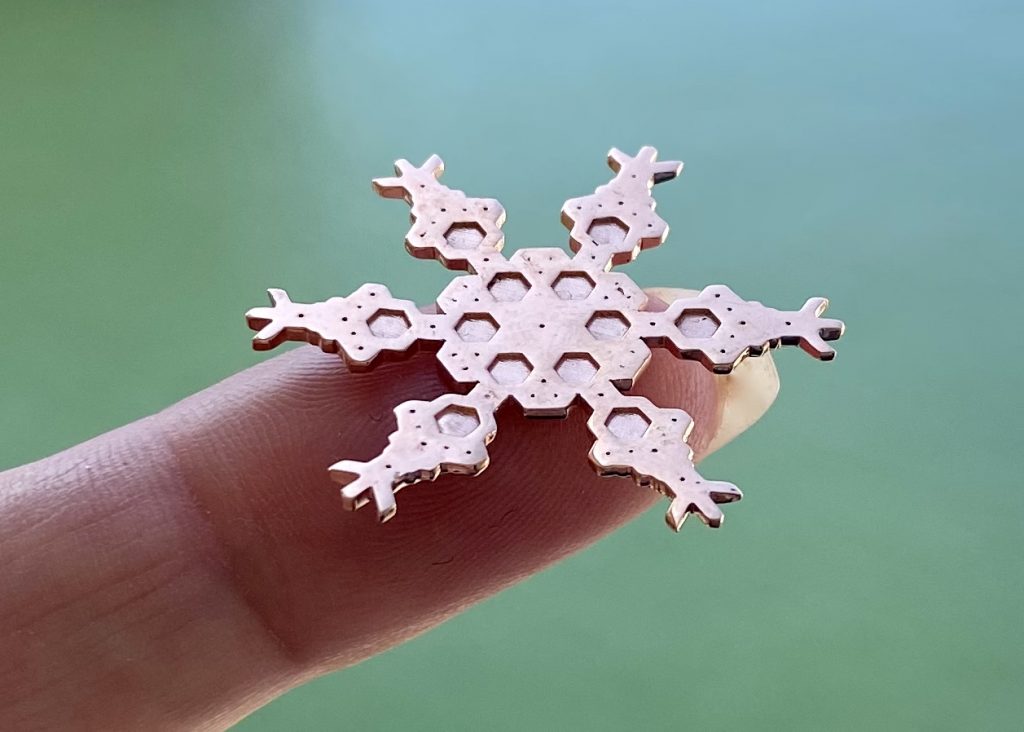
SARS-CoV-2 – SARS-CoV-2 RNA (coronavirus) from a plasmid construct. This is a safe, non-infectious reagent for SARS-CoV-2 research (NIBSC 19/304), obtained from the National Institute for Biological Standards and Control, UK. SARS-CoV-2 RNA was supplied by researchers Dr Ines Moura and Dr Jane Freeman at the University of Leeds who are working with the SARS-CoV-2 primers and the RNA construct in the development and use of a RT-PCR assay for SARS-CoV-2 detection in faeces.

Staphylococcus aureus – A bacterium cultured from the normal skin flora of the artist. From the National Collection of Type Cultures (NCTC 14139)
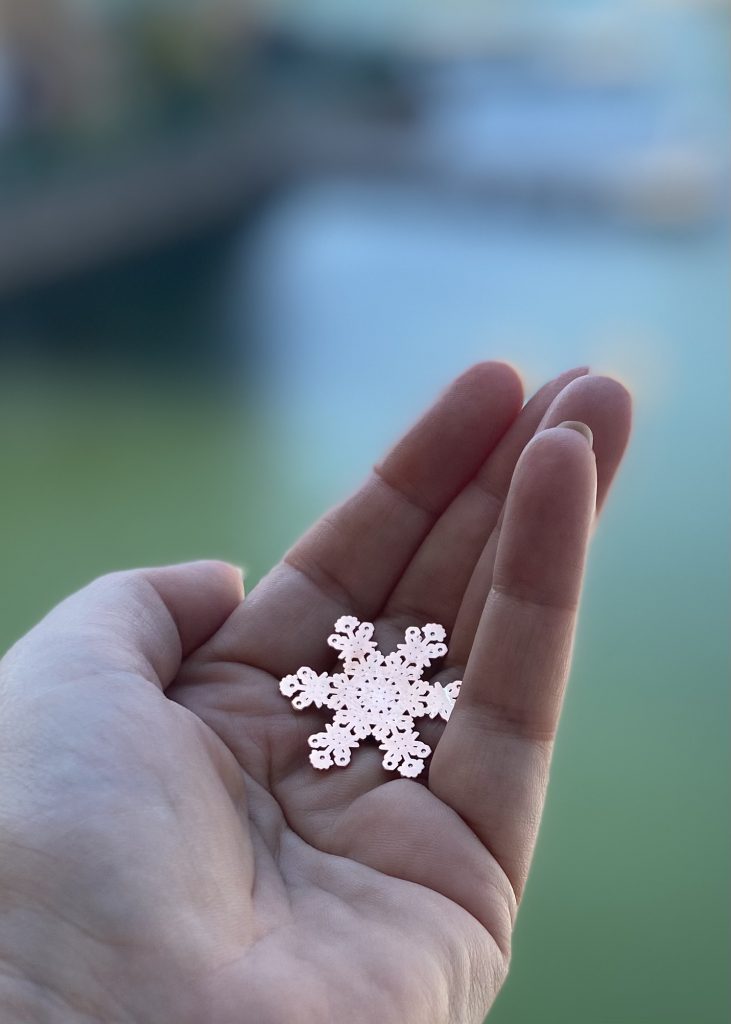
Deinococcus radiophilus – a bacterium highly resistant to radiation exposure. From the National Collection of Type Cultures (NCTC 10785)

Bacillus mycoides – a bacterium frequently found in soil that forms beautiful lace-like shapes when grown in culture. From the National Collection of Type Cultures (NCTC 926)
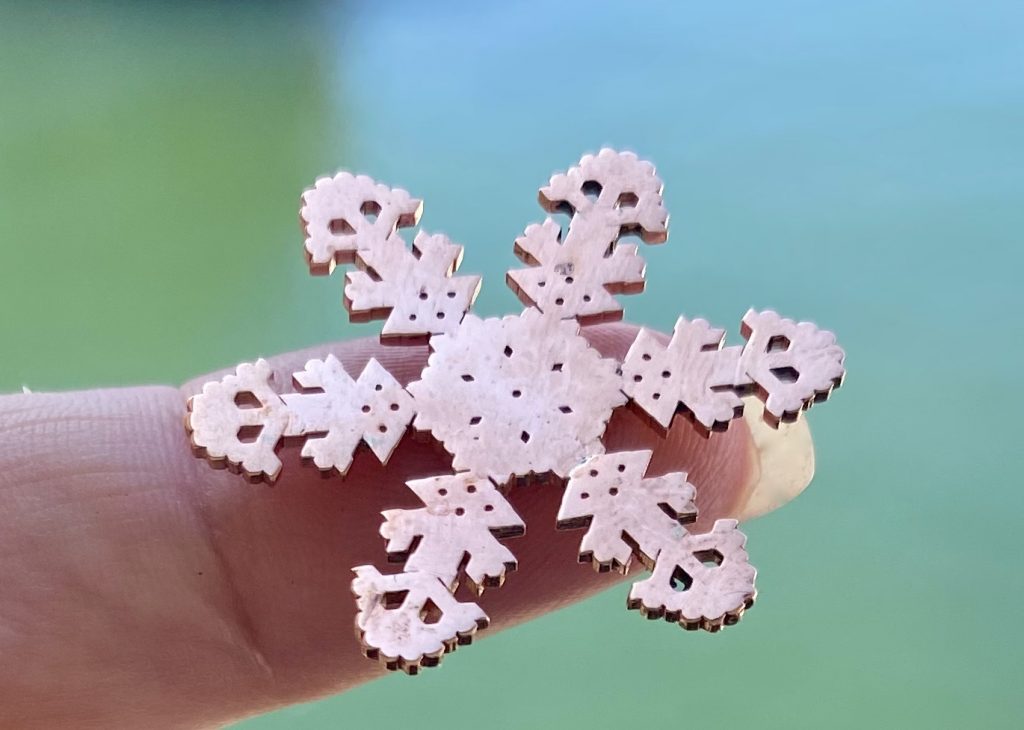
Brachyspira innocens – a spiral shaped bacterium that can survive in lakes and pond. From the National Collection of Type Cultures (NCTC 13044)
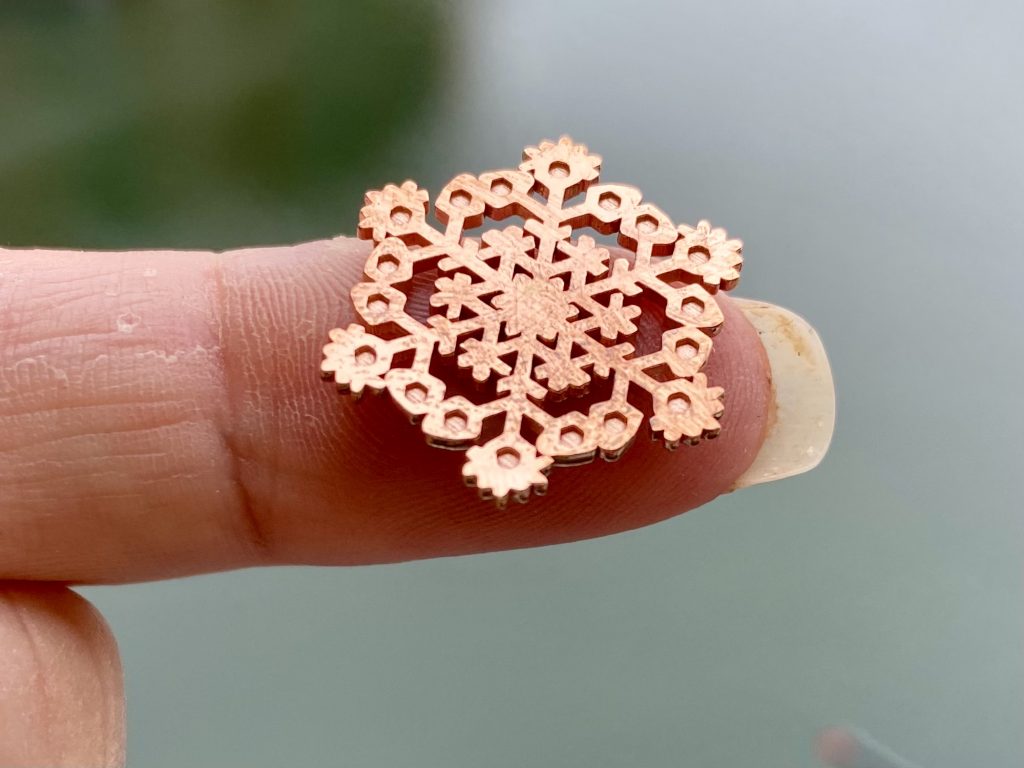
Kocuria rosea – a bacterium found in soil and water, and occasionally on human skin. From the National Collection of Type Cultures (NCTC 7514)
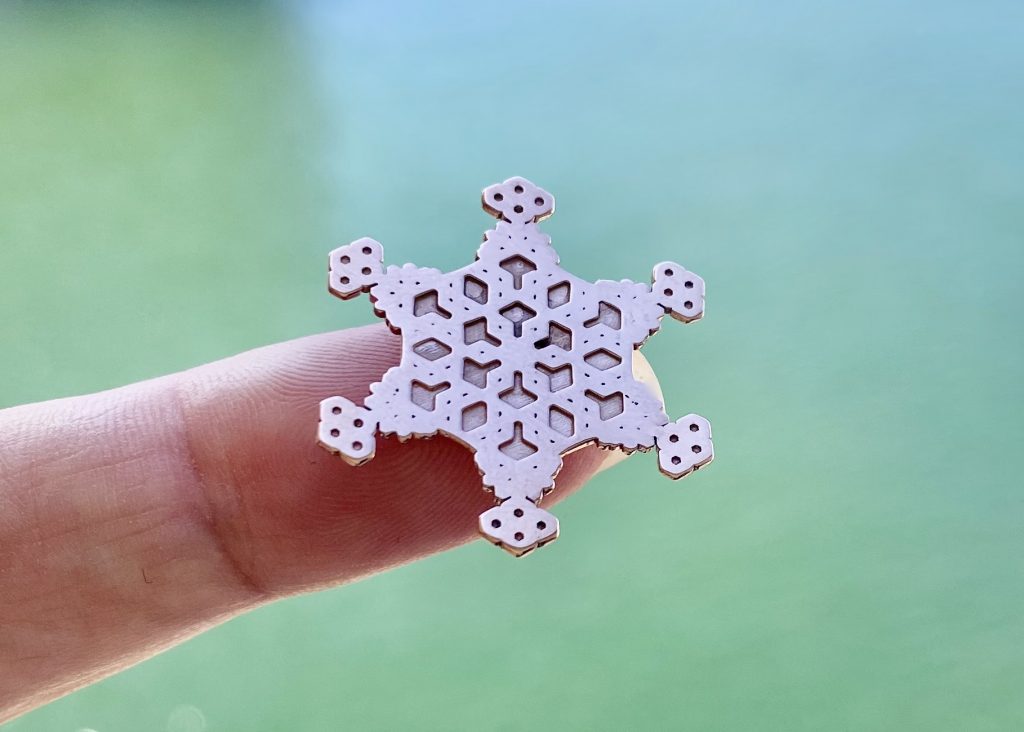
Micrococcus luteus – a bacterium found in soil, dust, water and air, and also on skin. From the National Collection of Type Cultures (NCTC 7503)

Pseudomonas taetrolens – a bacterium found in eggs and as part of the bat microbiome. Another Pseudomonas species called Pseudomonas syringae has been implicated as an atmospheric “biological ice nucleator”, and proteins from it have even been used to create artificial snow. From the National Collection of Type Cultures (NCTC 8067)
